Genre: Shmup Developer: M2 Publisher: Sega Ent. Players: 1 Released: 2019
Sega and M2’s decision to make Darius a flagship title for the Mega Drive Mini in 2019 wasn’t just nostalgic indulgence, it was a recognition of the game’s massive cultural weight in Japan. Darius wasn’t merely an arcade shooter; it was an event. Developed over two years with more than 40 top developers, including collaboration with animation giant Tatsunoko Pro for its biomechanical boss designs, Darius stood alongside Sega’s Hang-On and Space Harrier as a technical and sensory showcase. Its triple-screen panoramic cabinet, body-sonic subwoofer, and Hisayoshi Ogura’s eerie, alien soundtrack created an overwhelming, fully immersive experience. In 1987 it swept Gamest magazine’s awards for “Game of the Year,” “Best Graphics,” and “Best Shooting Game.”
But Darius shipped incomplete. Its 26-zone branching map was meant to feature unique bosses in every zone, but memory limits forced Taito to cut that number to eleven. This vision wasn’t fully realized until 1990 with Super Darius on the PC Engine CD-ROM², which finally implemented the full boss roster as originally intended. While developed by Bits Laboratory for NEC Avenue, Taito also supported it. Still, technical compromises had to be made: reduced boss animations, softened bullet patterns, and a shift from FM synthesis to CD audio (with Dolby Surround support). It also introduced two gameplay issues: the wave weapon sometimes failed to award points, and the Mirage enemies’ formation bonus incorrectly triggered in early stages. Darius Plus arrived on HuCard later that year, slimming the boss roster to sixteen but fixing the wave weapon bug and tightening collision detection. Both versions carried quirks in boss hit point scaling and bullet behavior that reflected the limitations of the hardware rather than pure arcade accuracy.
Then came Darius in 2019, a fully native Mega Drive game. Built from scratch for the Mega Drive Mini, this wasn’t a port, a hack, or a hypothetical. Structurally, it inherits the twenty-six-boss framework from Super Darius, but mechanically, it adheres to the New Version arcade rules, coupled with hit point tuning and enemy spawn smoothing lightly informed by Extra Version. Crucially, it does so without inheriting Extra’s random bonus spheres or ground bullet spam and without implementing the difficulty options present in the PCE ports.
Technically, it’s breathtaking. Bosses like Octopus (Zone X) and Green Coronatus (Zone W) are fully articulated: limbs, tails, and mechanical appendages animate fluidly through a combination of aggressive sprite decomposition, horizontal VDP trickery, scanline interrupts, and, critically, per-frame tilemap manipulation techniques developed by Hideki Konishi. Rather than relying purely on the Mega Drive’s sprite layer, large parts of the bosses are dynamically assembled from background tiles that update in real time; a method that bypasses hardware sprite limits and allows for segmented motion that mirrors the arcade’s mechanical animations with surprising fidelity. Background parallax depth matches the arcade’s layered aesthetic, bullet density also matches the arcade PCB, and the frame rate holds solid at 60 FPS for almost the entire game.
The soundtrack is rendered on the YM2612 with PCM samples via the XGM driver, using mechanical choirs, industrial rhythms, and unsettling harmonies of Ogura’s score translate far better than anyone had reason to expect. While stereo separation is less pronounced than the arcade’s multi-channel output, and PCM sound effects can overpower the music in the mix, the rendition is very good; a vast improvement over the PC Engine’s HuCard audio fidelity.
Darius’s gameplay mirrors the arcade closely but not perfectly. Collision detection carries the same harsh edge seen in Darius Plus, especially near terrain where the ship can feel as though it’s magnetically pulled into walls. However, it’s more consistent than Super Darius, avoiding that version’s erratic grace windows. Zone M’s steroid formation finally behaves correctly, dynamically adjusting to the player’s horizontal position, with the pods entering from different angles depending on where the player is on-screen. In both Super Darius and Darius Plus, this mechanic was broken; the steroid formation was completely static, always entering at the same position regardless of player movement, gutting the reactive tension the arcade version relied on. The Mirage enemies’ formation with inflated scoring bonus persists in early zones, inherited from the PC Engine’s lineage, but the late-game arcade bug, where the game displayed a 40,000-point bonus without actually awarding the points, is corrected here. The Super Darius wave weapon scoring bug is not present either.
Hidden within the game are developer tools and alternate modes. Debug Mode is enabled with Right, Left, Right, Left, B, B, B, B, Left at the title screen. When successful, the word DEBUG appears. This grants level select and, in-game, allows X to toggle invincibility, Y to max out weapons and shields (even when paused), and Z to warp directly to the boss, as determined by the Boss Type setting in the menu. Shields are also double strength while Debug is active. Arcade Mode is enabled by entering Right, Left, B, Right, Left, B, Left, Right, B at the title screen. The label ARCADE MODE appears onscreen. In this mode, pause is disabled, auto-fire is locked to 10Hz (if it was ON) or remains OFF (if it was OFF), and the player is forced to use Proco (Tiat is unavailable). The twenty-six-boss structure is disabled, and the game returns to the arcade’s eleven-boss map. Even the coin mechanism is restored: X inserts credits. High scores are tracked separately for this mode. A hidden Music and Sound Test is also present. It’s unlocked with Left, Right, B, Left, Right, B, Right, Left, B at the title screen. The screen resets with no confirmation sound, and Sound Test becomes permanently available in the options menu.
Despite all the improvement, however, there are blemishes. Auto-fire lacks deeper customization. Fatty Glutton remains a brutal difficulty spike. A bug causes the “Game Over” sound to play even after clearing the game, a sound cue logic error unique to this version. On real hardware, using flashcarts like the Everdrive MD, minor graphical glitches may occur when bosses dissolve into the background layer after defeat, alongside occasional PCM sound hiccups. None of these are game-breaking, but they are real quirks of this version that officially targeted the Mega Drive mini and not a real Mega Drive.
Even so, none of it diminishes what this release represents, with solid, intense gameplay where navigating terrain matters as much as shooting enemies, and momentous boss fights. Darius is a timeline correction finally made real, built with reverence and attention to detail. It isn’t flawless. Some scars are ancient, carried through lineage. Others are the eccentricities of a passion project made decades after the hardware’s commercial death. But judged for what it is, a fully native Mega Drive game, it’s extraordinary. Considering its flaws and strengths, this is an eight out of ten shmup, and it’s far more engaging and fun than the first few attempts may suggest. A monument to preservation and one of the most culturally significant shooter releases of the modern era, which would be later surpassed in several aspects by the Darius Extra Version physical release.
SCORE: 8 out of 10

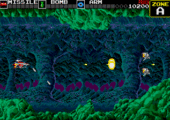
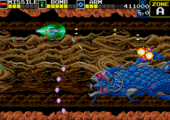
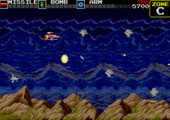
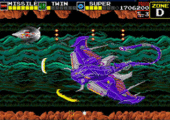
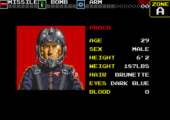
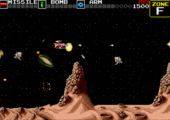
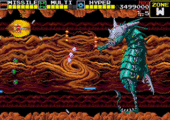

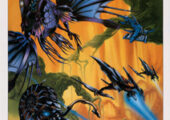
Recent Comments